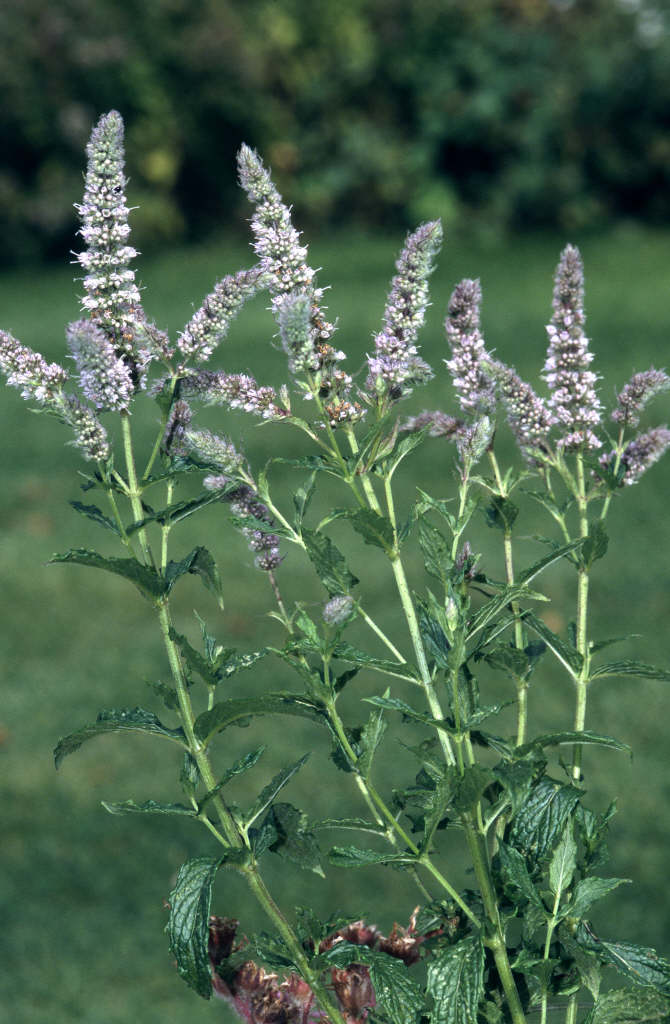Mentha spicata
spearmint
A vigorous rhizomatous perennial forming an extensive colony of upright, four-ribbed stems, up to 100 cm tall and wide. Typically sweet-scented leaves are oval shaped, with pointed tips and serrated edge. Leaves are bright green, 5-9cm long and 1-3cm wide. Light purple flowers 2-3mm small are produced in interrupted, slender terminal spikes in summer
Size
Ultimate height
0.5–1 metresTime to ultimate height
2–5 yearsUltimate spread
1–1.5 metresGrowing conditions
Moisture
Moist but well–drained, Poorly–drainedpH
Acid, Alkaline, NeutralColour & scent
| Stem | Flower | Foliage | Fruit | |
| Spring | Green | |||
|---|---|---|---|---|
| Summer | Purple | Green | ||
| Autumn | Green | |||
| Winter |
Position
- Full sun
- Partial shade
Aspect
South–facing or East–facing or North–facing or West–facing
Exposure
Exposed or Sheltered Hardiness
H7Botanical details
- Family
- Lamiaceae
- Native to GB / Ireland
- Yes
- Foliage
- Deciduous
- Habit
- Suckering
- Genus
Mentha are aromatic, rhizomatous perennials with opposite, toothed leaves and small tubular flowers in spikes of whorls in summer
- Name status
Correct
- Plant range
- Europe to China
How to grow
Cultivation
Grow in any moist soil, in any situation. Water newly planted mint until established, and in summer if grown in pots. In damp soils, the plants have the potential to become a nuisance so restrict the root run in a deep container and plunge into the ground, or plant in a well-chosen site where it can grow unrestricted. Plants grown in pots will benefit from splitting and dividing every few years. For more information see mint cultivation
Propagation
Propagate by seed or division in spring or autumn
Suggested planting locations and garden types
- Cottage and informal garden
- Wildlife gardens
- City and courtyard gardens
- Patio and container plants
Pruning
Harvest young sprigs regularly to encourage bushy growth and cut back to 5 cm from the base after flowering
Pests
May be susceptible to sage leafhopper, blue mint beetle and caterpillars
Diseases
May be susceptible to powdery mildews and mint rust
Get involved
The Royal Horticultural Society is the UK’s leading gardening charity. We aim to enrich everyone’s life through plants, and make the UK a greener and more beautiful place.
